Dear Artist,
In decades-old news that will surprise none of you, Danish, English and Swiss researchers have discovered that even though artists in Europe are mostly broke and depressed, they report higher job satisfaction than non-artists. Apparently, it has something to do with autonomy.

Spiz’s Dinette, 1998
Stick pins, Popsicle sticks, cigarette-pack foil
by Dean Gillespie (b.1965)
While an inmate in Ohio state prisons — a case of wrongful conviction — Gillespie made dozens of miniatures including this Airstream camper.
Hungarian-American humanist, psychiatrist and former scholar at SUNY Upstate Medical University in Syracuse, New York, Thomas Szasz, described autonomy as the “freedom to develop one’s self – to increase one’s knowledge, improve one’s skills, and achieve responsibility for one’s conduct.” It is, perhaps, the backbone of creative happiness. In order to achieve it, one must first dress for the job; in the form of self-starting, with disciplined habits and the ability to work independently. Because there is no guarantee of reward for making things nobody asked for, an artist must rely on her own intrinsic motivations to begin and continue in her work. By working autonomously – without an overlord, she makes herself more autonomous. And by living this way, she gains further freedom to develop herself and her ideas. Furthermore, history has shown us that even if one is not physically, financially or emotionally “free”, it is still possible to live autonomously within one’s creative spirit, and to create works of art in response to and because of a built-in, or cultivated inner and independent pursuit.
“[Autonomy] is freedom to lead one’s own life,” wrote Dr. Zsasz, in his concern for human suffering and criticism of the social control aims of psychiatric medicine in modern society. In his 1961 treatise The Myth of Mental Illness: Foundations of a Theory of Personal Conduct, Dr. Szasz campaigned against the overreach of modern medicine; especially what he believed was psychiatry’s pathologizing of a spectrum of human behaviors and its use for non-consensual drug, electroconvulsive and surgical therapies. “The plague of mankind is the fear and rejection of diversity: monotheism, monarchy, monogamy and, in our age, monomedicine,” he wrote. “The belief that there is only one right way to live, only one right way to regulate religious, political, sexual, medical affairs is the root cause of the greatest threat to man: members of his own species, bent on ensuring his salvation, security, and sanity.”
In 2022, Dr. Szasz voluntarily ended his own life, after a fall at age 92. Though he is no longer alive, his arguments foreshadowed our culture’s continued zeal for diagnosis and treatment to address what he called “problems in living.” At the risk of simplifying the complex assortment of emotional and mental conditions of being alive, perhaps one possible tool in our ever-evolving mental health toolbox is more creative autonomy. “The goal,” wrote Dr. Szasz, is to assume more responsibility and therefore gain more liberty and more control over one’s own life.”
Sincerely,
Sara
PS: “People often say that this or that person has not yet found himself. But the self is not something one finds, it is something one creates.” (Thomas Szasz)
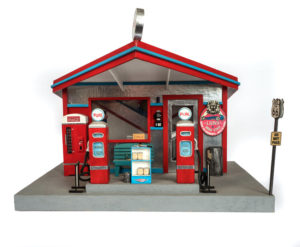 Esoterica: I remember all those years in New York , with what my mother called, “no nice things,” surviving creatively on the sales of my paintings, revelling into every night in a 5-storey village walk-up, at the piano, the desk, the easel. “Rome wasn’t built in a day,” I repeated to myself and others, “and I’m building Rome.” I had no longings except to know myself at what I would recognize as my highest expression, in a life on my terms. “Only a self-disciplined person can be obedient; and only such a person can be autonomous,” wrote Dr. Szasz in The Myth of Mental Illness. Assuming we’re capable of summoning the self-discipline and obedience to follow our intrinsic motivations, therein lies a proven pathway to personal joy. Another word for what, in studies, they call “job satisfaction,” can be thought of here, as “life.”
Esoterica: I remember all those years in New York , with what my mother called, “no nice things,” surviving creatively on the sales of my paintings, revelling into every night in a 5-storey village walk-up, at the piano, the desk, the easel. “Rome wasn’t built in a day,” I repeated to myself and others, “and I’m building Rome.” I had no longings except to know myself at what I would recognize as my highest expression, in a life on my terms. “Only a self-disciplined person can be obedient; and only such a person can be autonomous,” wrote Dr. Szasz in The Myth of Mental Illness. Assuming we’re capable of summoning the self-discipline and obedience to follow our intrinsic motivations, therein lies a proven pathway to personal joy. Another word for what, in studies, they call “job satisfaction,” can be thought of here, as “life.”
Have you considered a Premium Artist Listing? With each letter, an artist is featured at the bottom of this page. The Premium Artist Listings are a means of connecting artist subscribers through their work. Proceeds from each listing contribute to the production of The Painter’s Keys.
“In the animal kingdom, the rule is, eat or be eaten; in the human kingdom, define or be defined.” (Thomas Stephen Szasz)
Featured Workshop
Featured Artist
Gardens are my enduring inspiration, and getting to the heart of the flower, my passion.

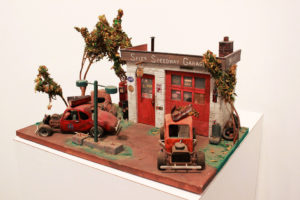
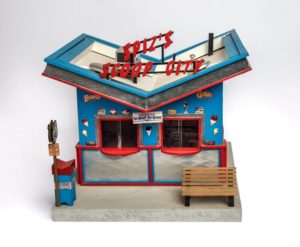

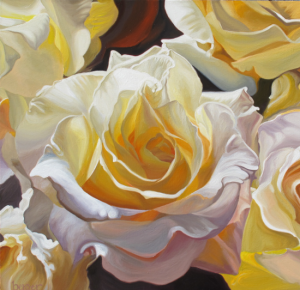

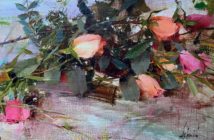
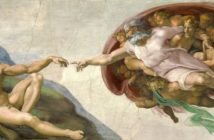
14 Comments
I attract followers who admire the freedom in my painting and say they want to learn to paint as I do. I understand that they do not really want to paint like me but, in your words, “to know myself at what I would recognize as my highest expression.” That longing is at the core of my own creative endeavors and, as much as possible, I aim to help others get past their inhibitions to let go and let something deeper and more essential express more freely. It’s not an easy task for either teacher or student!
Freedom is so often misinterpreted as something possible only when circumstances line up with one’s conditioned beliefs. Autonomy is a much more apt descriptor of the inner state one achieves, like Viktor Frankl, by claiming responsibility for creating a life under any conditions. This helps me understand why, even before I began painting rather late in life, the freedom to let loose may have come more easily to me than for some whose life experiences have been more conventional (and safer).
Thank you for your insights and for pointing me to the work of Dr. Szasz!
So true Ellie. Great to see you on here!
This piece struck such a deep root for me, Sara. After such a structured life, a black and white world where everything was either/or, art released from deep within a riot, a rainbow of colors and shapes and forms. Dr. Szasz explained something which nags and nags: A certain selfish desire to create art above anything else. Instead of selfish, perhaps this urge and freedom to do so in these later years allows me to emerge, a self structured for decades. As I learn to play Native American flutes and drums, the music speaks of wonder-filled places after being shushed all my life.
Thank you for this wonderful article, Sara. It is still validating to stand in front of the easel every day, no matter what cyclone whirs about, and feel the weight of the world fall away, knowing that THIS is the place I NEED to be. And then begins a prolonged instance of meditation as I paint myself into a time warp. Have a wonderful weekend, everyone!
Thank you for a timely article on creativity and autonomy. During these difficult times, being able to go into my studio alone to express what is going on inside my heart and soul without expecting anyone else’s approval has been a gift. I try to paint 3 out of four pieces only for myself. The last one is for possible sale. This frees me up to do art that is truly mine instead of painting what I think a buyer might want.
Thank you for a timely article on creativity and autonomy. During these difficult times, being able to go into my studio alone to express what is going on inside my heart and soul without expecting anyone else’s approval has been a gift. I try to paint 3 out of four pieces only for myself. The last one is for possible sale. This frees me up to do art that is truly mine instead of painting what I think a buyer might want.
As someone who struggles with feeling a lack of freedom in today’s world, Dr. Szasz’s words struck me deeply with his rare point of view. As an artist that hasn’t been able to forge any kind of creative career to support myself, I long for freedom in my life, more than anything else. I agree the world mostly fears the different, the unusual, the new idea; and this lack of tolerance only strangles life and growth. As everyone’s mental health suffers more and more these days, and as people become more isolated, the medical system is not addressing any true causes of the problem, or finding any valid ways to support people’s mental health. Perhaps prescriptions for more creative pursuits are in order, as Sara suggests? Thanks Sara, for one of your best letters yet!
“…especially what he believed was psychiatry’s pathologizing of a spectrum of human behaviors…” For some unknown reason, it’s become common to ‘pluralise’ words that normally do *not* take a plural. The plural of ‘vinyl’ is ‘vinyl’. The same applies to ‘addiction’ and ‘support’. The word ‘behavior’, in its proper context, does not take a plural. Behavior can be erratic, but it still remains characterized by a singular person. Simply pluralizing a word doesn’t increase its…import.
A wonderful post, and so many touching responses. Thanks, Sara!
Love this one, Sara. I also love those miniatures in the images you included. I have come to understand well the eventual results of self discipline, and also of self faith. My inner voices that try to sabotage my confidence don’t win anymore. Many artists who I know say they began doing their best work into their sixties. Now I see what they mean. It all just comes together.
Thank you for such a wonderful article. I now have to find his book and read it. As both an artist and professor I am constantly amazed that the “helping” professions send me notes telling about some student’s perceived inability to learn or navigate life. When, the reality is that they walk to a different drummer, see life in a slightly different way, and are so much bloody fun to teach. I don’t care how they learn I just want to see what they make. It is also always a pleasure to watch the first term for every art student – they open up, smile, walk differently, get excited, stop being afraid they are too different – they have finally found their people.
Sherry, I so agree with you and you expressed it beautifully! You remind me of my first art teacher in 8th grade–9th grade who saw potential in me that no one else saw. I will forever be in her debt. Those adolescent years were tumultuous for me and her art classes gave me a safe place to find myself–my happy place.
Autonomy, my life quest. One of your best Sara.
Fantastic! And so helpful to me today – thank you!